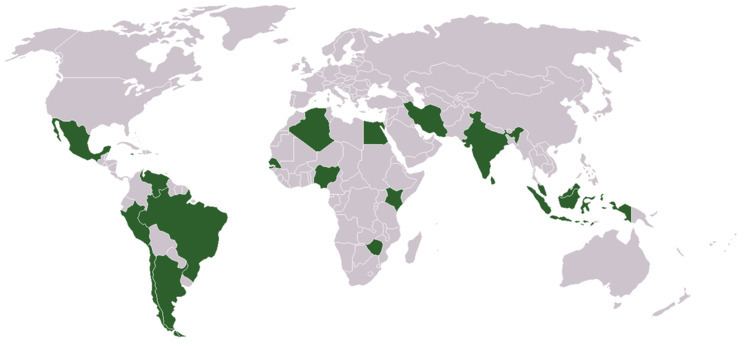Formation 19891990 (Summit) | Website www.g15.org | |
 | ||
Purpose Act as a catalyst for greater cooperation between leading developing countries. | ||
The Group of 15 (G-15) is an informal forum set up to foster cooperation and provide input for other international groups, such as the World Trade Organization and the Group of Eight. It was established at the Ninth Non-Aligned Movement Summit Meeting in Belgrade, Yugoslavia, in September 1989, and is composed of countries from Latin America, Africa, and Asia with a common goal of enhanced growth and prosperity. The G-15 focuses on cooperation among developing countries in the areas of investment, trade, and technology. Membership has since expanded to 18 countries, but the name has remained unchanged. Chile, Iran and Kenya have since joined the Group of 15, whereas Yugoslavia is no longer part of the group; Peru, a founding member-state, decided to leave the G-15 in 2011.
Contents
Structure and activities
Some of the objectives of the G-15 are:
By design, the G-15 has avoided establishing an administrative structure like those for international organizations, such as the United Nations or the World Bank; but the G-15 does have a Technical Support Facility (TSF) located in Geneva. The TSF functions under the direction of the Chairman for the current year. The TSF provides necessary support for the activities of the G-15 and for its objectives. Other organs and functions of the G-15 include:
In addition, the Federation of Chambers of Commerce, Industry and Services (FCCIS) is a private sector forum of G-15 member countries. The purpose of the FCCIS is to coordinate and maximize efforts which promote business, economic development and joint investment in G-15 nations.
In 2010, the chairmanship of the G-15 was accepted by Sri Lanka at the conclusion of the 14th G-15 summit in Tehran.
